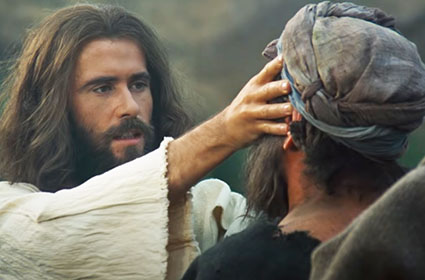by WorldTribune Staff, November 22, 2022
The film “Jesus”, first released more than 40 years ago, reached a huge milestone recently when it was translated into the Zo language. It was the 2,000th time the film has been translated into another language.
“Jesus” is the most translated film in the history of cinema, according to Guinness World Records.
 Bill Bright, the late co-founder of Cru, the evangelistic organization formerly known as Campus Crusade for Christ, got the film rolling in 1979.
Bill Bright, the late co-founder of Cru, the evangelistic organization formerly known as Campus Crusade for Christ, got the film rolling in 1979.
It is now a ministry of the Cru organization and is translated so that people can access “the life-changing story of Jesus” in their own language, Mark A. Kellner reported for The Washington Times on Nov. 11.
Organizers said that an estimated 633 million people committed their lives to Christ after viewing the film.
“Because the word of God is so powerful, it’s very compelling to see it come alive in a movie,” said Josh Newell, executive director of Cru’s Jesus Film Project. “People see this as an accurate portrayal of the life, death and resurrection of Jesus. They use it in every church extension or evangelism effort to grow their church or to start new ones.”
Newell said Cru’s goal is to get “Jesus” translated and voiced into a total of 5,000 languages of the estimated 7,000 spoken languages in the world today.
As for “Jesus” being translated to the Zo language, Mang Sing, a Christian pastor born in Myanmar‘s Chin state, said: “I couldn’t imagine Jesus would ‘speak’ in Zo,” the language of about 180,000 people around the world, “My spirit just revived and vibrated” when he heard the words of the Gospel of Luke in his native tongue.
Since its original release on film in 1979, Kellner noted that “Jesus” has migrated to video, digital formats and online streaming such as YouTube. There’s a smartphone app people can use to not only view the film, but also share it in a multitude of languages.
Newell said maintaining the film’s visual quality after decades of use is “a painstaking process” that involves technicians “going frame by frame over the original footage that the film was taken in, and removing dust and other types of particles. It took us about 10 years to upgrade to [high-definition] because we’re a small ministry, and we didn’t outsource it.”
“We just kind of took it on as a labor of love,” he added, “to give it another, you know, 10 to 15 years of visual life.”
Action . . . . Intelligence . . . . Publish
